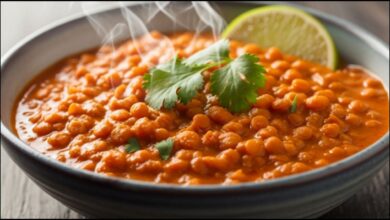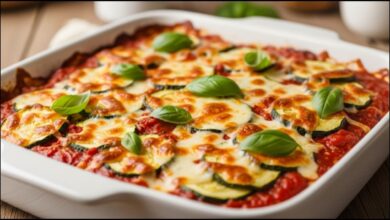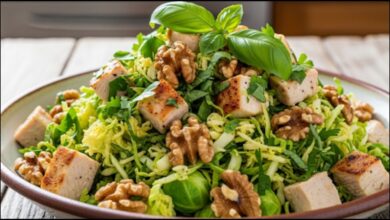How to Make Perfect Homemade Applesauce from Scratch
Discover the joy of this classic homemade applesauce recipe. Our simple, step-by-step guide walks you through creating a delicious, customizable applesauce with just a few ingredients. Perfect for beginners and seasoned cooks alike for a truly comforting treat.
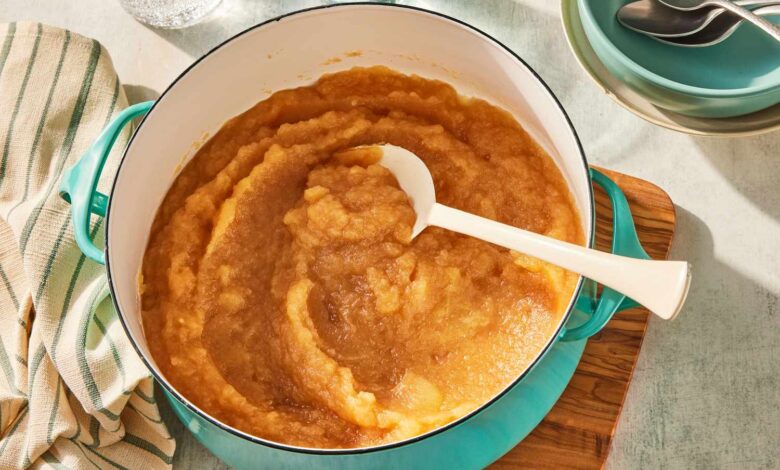
There’s a certain magic that happens when fall rolls around. The air gets crisp, the leaves turn to gold, and my kitchen starts to fill with the comforting scents of the season. For me, nothing captures that feeling better than a warm pot of applesauce simmering on the stove. I still remember standing on a stool as a kid, “helping” my mom stir the pot, completely mesmerized by how a few simple apples could turn into such a delicious treat.
Forget the bland, watery stuff from the grocery store. This homemade applesauce recipe is the real deal—packed with fresh apple flavor, wonderfully textured, and so easy to make you’ll wonder why you ever bought it. It’s a recipe I’ve tweaked and perfected over the years, and it has become a fall staple in my home. Whether you’re a seasoned cook or just starting out, I promise you can make this. Let’s walk through it together and fill your kitchen with the best aroma imaginable.
Quick Recipe
- Preparation Time: 15M
- Cooking Time: 25M
- Total Time: 40M
- Type of dish: Side Dish, Snack, Dessert Topping
- Cuisine: American
- Recipe Yield: 6 cups
- Calories: 121 kcal per cup
Choosing the Best Apples for Applesauce
The first, and most important, step in our homemade applesauce recipe is selecting the right apples. Honestly, you can make applesauce with almost any apple, but the best applesauce comes from a mix. Using a combination of sweet and tart apples creates a wonderful depth of flavor that you just can’t get from a single variety.
Here’s the simple approach I’ve always followed:
- For Sweetness & Smoothness: Softer apples that break down easily are perfect. They cook into a naturally sweet, velvety base. My go-to choices are Golden Delicious, Fuji, Gala, and McIntosh.
- For a Tart Kick & Texture: A firm, tart apple adds a bright, tangy note that balances the sweetness. They also tend to hold their shape a bit better, which is great if you like a chunkier sauce. Granny Smith, Braeburn, and Honeycrisp are fantastic options.
My perfect batch? I usually use about two-thirds sweet apples (like Fuji or Gala) and one-third tart apples (like Granny Smith). This combination gives you a sauce that’s naturally sweet enough that you barely need any extra sugar, with a bright finish that makes it taste incredibly fresh. Don’t be afraid to experiment with what you have or what looks best at the market!

The Full Recipe
Classic Homemade Applesauce
A simple, foolproof recipe for making delicious and comforting applesauce from scratch. Perfect for customizing to your exact taste.
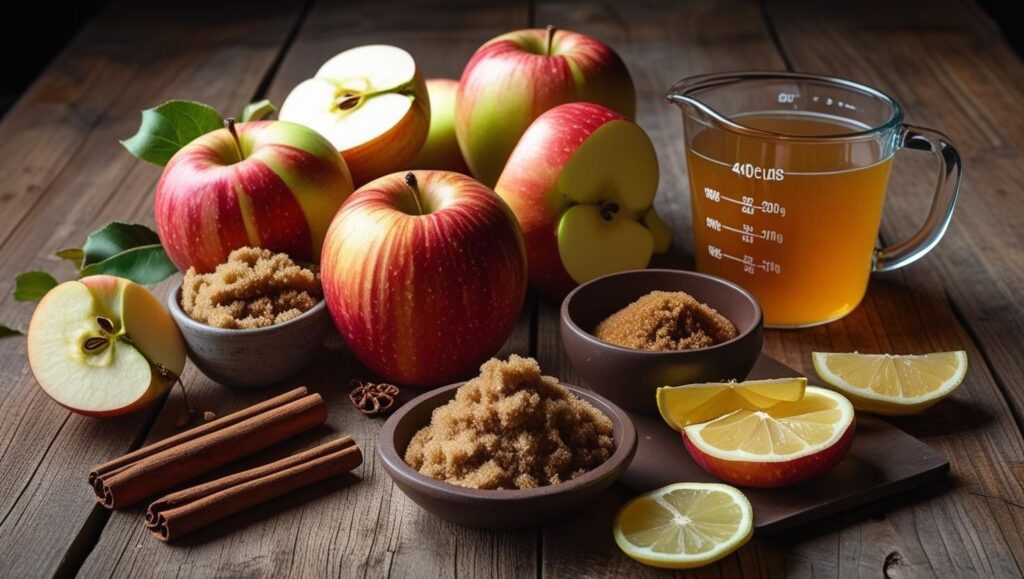
Ingredients
- 4 lbs apples, a mix of sweet and tart is best (about 8-10 medium apples)
- 1 cup apple cider (or water)
- 1/4 cup brown sugar (or to taste, optional)
- 2 cinnamon sticks (or 1 tsp ground cinnamon)
- 1 tbsp fresh lemon juice
Instructions
- Prep: Peel, core, and chop the apples into 1-inch chunks.
- Combine: Place the apples, apple cider, brown sugar, cinnamon, and lemon juice in a large pot or Dutch oven.
- Simmer: Bring the mixture to a boil over medium-high heat. Once boiling, reduce the heat to low, cover, and let it simmer for 20-30 minutes, or until the apples are very soft and tender. Stir occasionally.
- Mash: Remove the pot from the heat and discard the cinnamon sticks. For a chunky sauce, use a potato masher. For a smooth sauce, use an immersion blender.
- Serve & Store: Serve warm or chilled. Store in an airtight container in the refrigerator for up to 10 days.
Essential Tools for the Job
One of the reasons I love this recipe is that you don’t need any fancy gadgets. You likely have everything you need right in your kitchen.
- A Large Pot or Dutch Oven: Heavy-bottomed is best, as it distributes heat evenly and prevents the apples from scorching on the bottom.
- A Vegetable Peeler & Apple Corer (or a Paring Knife): For prepping the apples.
- A Potato Masher, Fork, or Immersion Blender: Your choice here determines the final texture of your sauce.
- Measuring Cups & Spoons
- Airtight Jars or Containers: For storing your delicious creation.
How to Make Applesauce: A Simple Step-by-Step Guide
Alright, let’s get down to it. This process is so simple and rewarding. We’re essentially just cooking down apples with a little liquid and spice until they are wonderfully soft and fragrant.
Step 1: Prep Your Apples
First things first, let’s get our apples ready. For about 6 cups of applesauce, you’ll want to start with around 4 pounds of apples.
Wash and dry your apples well. Now, the big question: to peel or not to peel?
- For a Silky-Smooth Sauce: You’ll want to peel your apples. The peels can create a tougher texture that some people don’t like.
- For a Rustic, Rosy-Hued Sauce: Leave the peels on! Especially if you’re using red apples, the peels will give your sauce a beautiful pinkish color and add a bit of extra fiber. If you leave the peels on, I recommend using an immersion blender or a food mill at the end to get a smoother result.
For this classic version, I’m going to peel them. Once peeled, cut the apples into quarters and remove the cores. Don’t worry about making your chunks perfect; we just want them to be roughly the same size so they cook evenly.
Step 2: Get Cooking
Place all your prepped apple chunks into your large pot or Dutch oven. Now, add the following:
- 1 cup of liquid: I use apple cider for an extra-intense apple flavor, but water or apple juice works perfectly fine. The liquid is crucial because it helps create steam and prevents the apples from burning before they start to release their own juices.
- 1/4 cup of sweetener (optional): I like to use brown sugar for its molasses notes, but you can use maple syrup, honey, or regular granulated sugar. You can also skip it entirely if your apples are sweet enough!
- 2 cinnamon sticks or 1 teaspoon of ground cinnamon: I love using whole cinnamon sticks because they infuse a gentler, more complex flavor.
- A squeeze of fresh lemon juice (about 1 tablespoon): This is my secret weapon! It might seem counterintuitive, but the acid in the lemon juice brightens all the other flavors and prevents the applesauce from tasting flat.
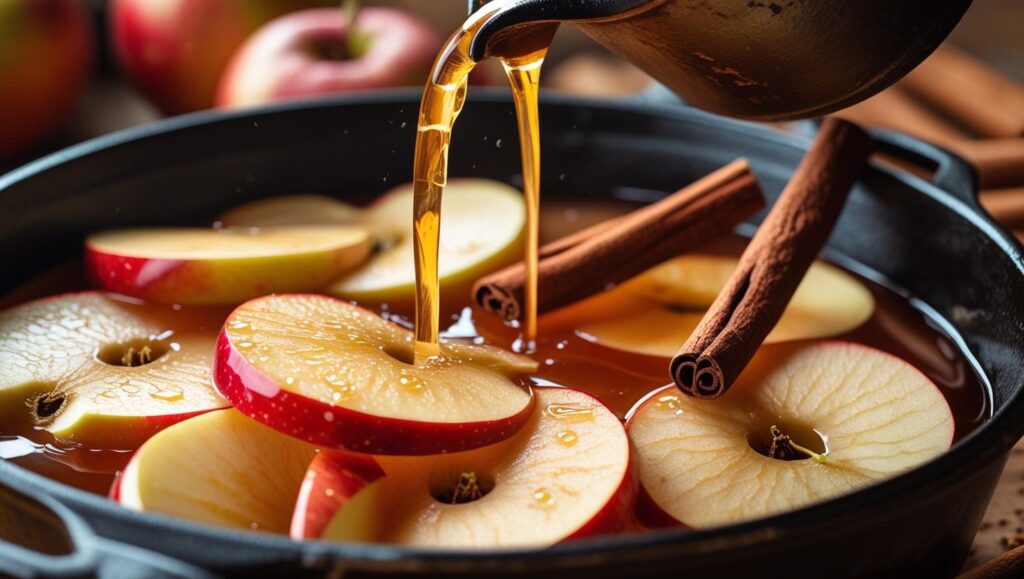
Give everything a good stir, bring the mixture to a boil over medium-high heat, then immediately reduce the heat to low. Cover the pot and let it simmer.
Step 3: Simmer to Softness
Let the apples simmer for about 20-30 minutes, stirring every so often to make sure nothing is sticking. You’ll know they’re ready when the apples are incredibly tender and fall apart easily when prodded with a spoon. Your kitchen will smell absolutely heavenly at this point!
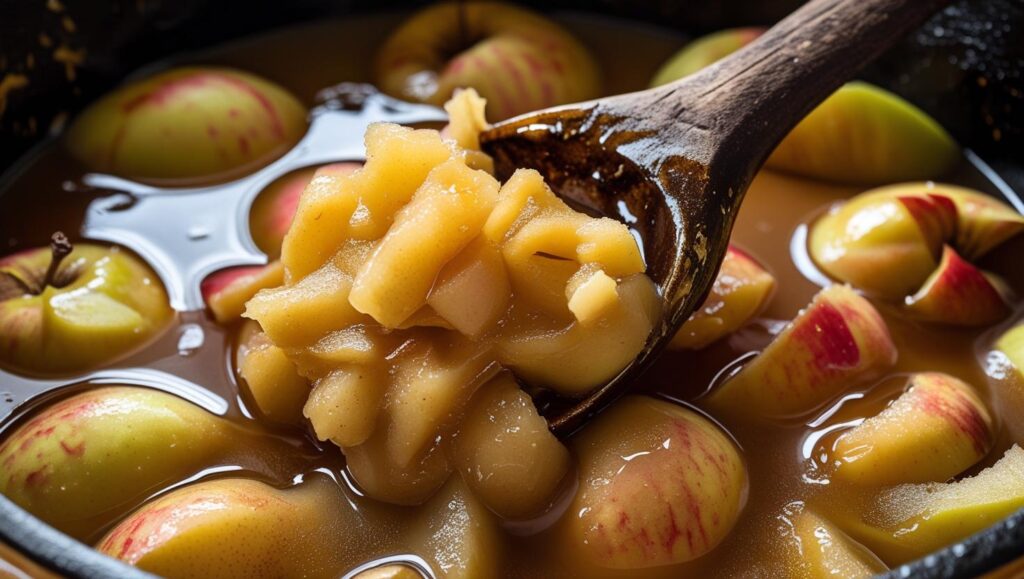
Step 4: Mash to Your Perfect Texture
Once the apples are cooked, remove the pot from the heat. If you used cinnamon sticks, fish them out now. This is where you decide your applesauce’s personality.
- For Chunky Applesauce: Use a simple potato masher or even a large fork to break up the apples. Mash until you reach your desired level of chunkiness. This is my family’s favorite way to have it.
- For Smooth Applesauce: Use an immersion blender directly in the pot and blend until smooth. Alternatively, you can carefully transfer the apples to a regular blender or food processor. Just be cautious when blending hot liquids!
Give your finished applesauce a taste. Does it need a little more cinnamon? A touch more sugar? Now is the time to adjust it until it’s perfect for you.
Storing Your Homemade Treasure
One of the best parts about making a big batch of this homemade applesauce recipe is having it on hand for snacks and meals.
- Refrigerator: Let the applesauce cool completely, then transfer it to airtight jars or containers. It will keep beautifully in the fridge for up to 10 days.
- Freezer: Applesauce freezes exceptionally well! Portion it into freezer-safe bags or containers, leaving about an inch of headspace at the top to allow for expansion. It will last for up to 3 months in the freezer.
More Than Just a Side Dish
This applesauce is delicious on its own, but it’s also incredibly versatile. Serve it warm alongside roasted pork or chicken, swirl it into your morning oatmeal or yogurt, or use it as a healthy substitute for oil in muffins and cakes.
I hope you love this simple, comforting recipe as much as I do. There’s a real sense of satisfaction in turning a handful of fresh apples into something so purely delicious. Happy cooking!
The Best Brown Sugar Apple Bran Oatmeal (Your New Favorite Breakfast)





